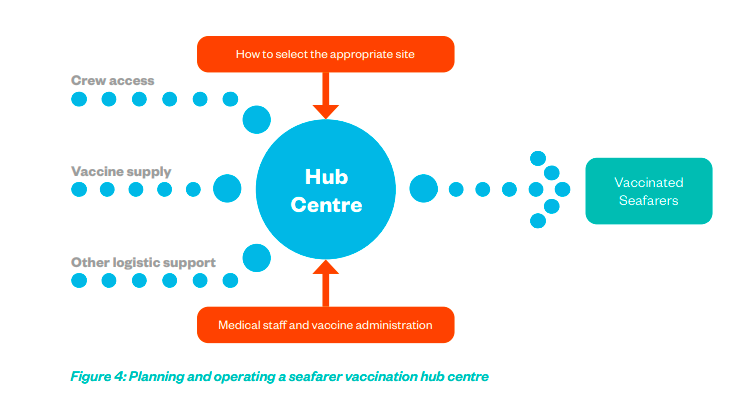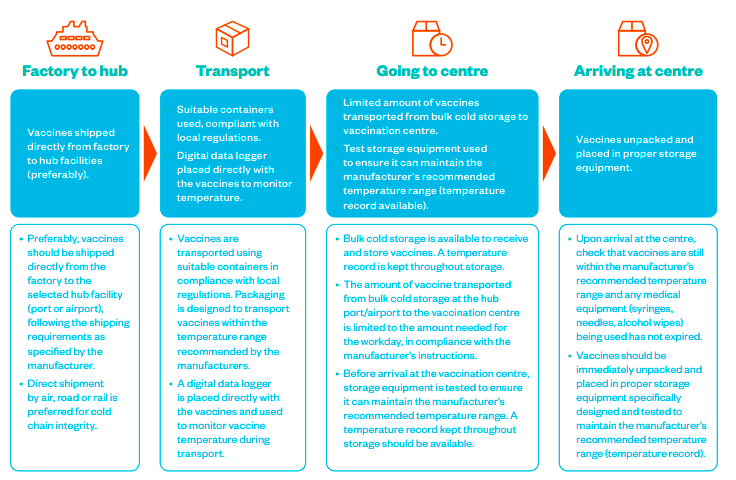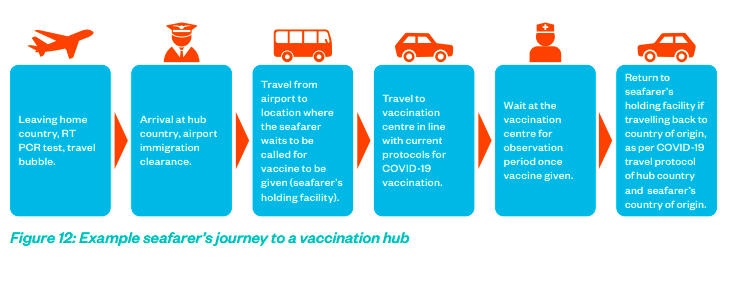As the US, Netherlands and other nations started to roll out vaccines to all seafarers, the International Chamber of Shipping released a “Vaccination Roadmap framework”, in an effort to boost the establishment of vaccination hubs dedicated to seafarers across the world.
At the moment, 16 states in the US have begun vaccination programmes for non-native crew delivering goods in their ports.
As explained, other European countries are set to follow suit in the coming weeks and months due to successful vaccinations programmes for their own population, including the Netherlands which will launch a vaccination programme for all seafarers, regardless of nationality, flying under the Dutch flag from mid-June.
[smlsubform prepend=”GET THE SAFETY4SEA IN YOUR INBOX!” showname=false emailtxt=”” emailholder=”Enter your email address” showsubmit=true submittxt=”Submit” jsthanks=false thankyou=”Thank you for subscribing to our mailing list”]
Following the situation, ICS issued a 21-page document focusing on vaccine eligibility, implementation, distribution, administration and legal issues.
The pace of covid-19 vaccine production is a modern marvel, but the world is reeling over distribution delays. Soon, seafarers will be delivering the vaccine by sea freight. Already they deliver critical PPE, safety boxes, syringes, and other medical materials for the vaccine rollout. Seafarers must be prioritised for the vaccine to not further exacerbate delivery delays.
…as Guy Platten, Secretary General of the International Chamber of Shipping, commented.
Some countries have already deployed mass vaccination campaigns, which can take place in large off-site vaccination centres set up in car parks, stadiums, commercial centres, etc. A programme for seafarers can specifically enable vaccination for seafarers who:
- Need to leave their vessels and return home.
- Emanate from countries which currently do not have vaccination available to seafarers
- Emanate from countries which currently have not prioritised seafarers in their vaccination campaigns.
What is more, the roadmap:
- Proposes a framework dedicated to seafarers, for the establishment of vaccination centres in hubs, i.e. places easily accessible to seafarers (ports or airports).
- Describes aspects to consider in a vaccination programme for seafarers, such as:
– Planning, setting up and operating a vaccination centre, including vaccine logistics and distribution.
– Rostering seafarers and associated documentation.
– Legal/liability considerations.
Types of vaccination
With over 50 vaccines in clinical trials, it is recommended that the vaccination administered should be on the WHO list of vaccines.
Due to the transient profile of international seafarers, single dose vaccines are strongly preferred under this roadmap. However it is recognized that these may not always be available in certain countries. Should a second dose be needed, plans should be developed for the second injection to be received in a timely manner.
Implementing the roadmap
National and local authorities, ships and seafarers and welfare providers should contribute to forming a multi-disciplinary team. This will be required to establish-and implement a seafarer vaccination roadmap, from -establishing a centre to rolling out the programme.
Establishing a vaccination site

Sites for vaccination hubs will be chosen based on their efficient crew access, plentiful vaccine supply and appropriate infrastructure support to supply and store vaccines. A site could be a port or an airport, or in existing medical facilities that are already used as a vaccination centre.
Transportation to vaccination centre

Travelling to the vaccination hub
Seafarers who cannot get a vaccine in their home country before joining a ship will need to follow protocols as specified by the port State.
Depending on the available confirmed booking slots, shipping companies can inform their manning agency, if applicable, to make travel arrangements for seafarers and to advise them of the information they need to receive prior to vaccination.
When travelling, as far as possible and practicable, a travel bubble should be formed for seafarers from their country of origin to the vaccination hub port, and vice versa.
When departing the country of origin, seafarers must provide a negative reverse transcription polymerase chain reaction (RT-PCR) test report and any additional fit-for-travel documentation which may be required by the destination countries and airlines on their behalf.
A seafarer’s journey to a vaccination hub can be illustrated as follows:

Seafarers travelling to a hub port vaccination centre and travelling to and from the ship must be maintained within a bubble (COVID-safe environment).
When a mobile vaccination team is established, vaccination of seafarers is performed on board a ship visiting the hub port, with the mobile medical team boarding the ship berthed (or at anchorage).
Legal and liability considerations
Vaccination requires an individual’s informed and voluntary consent. If an employed seafarer refuses vaccination, employers should consider the reasons given carefully.
Employers may consider not allowing unvaccinated employees to work. Each case will need to be considered on its own facts and an individual response made accordingly.




























































